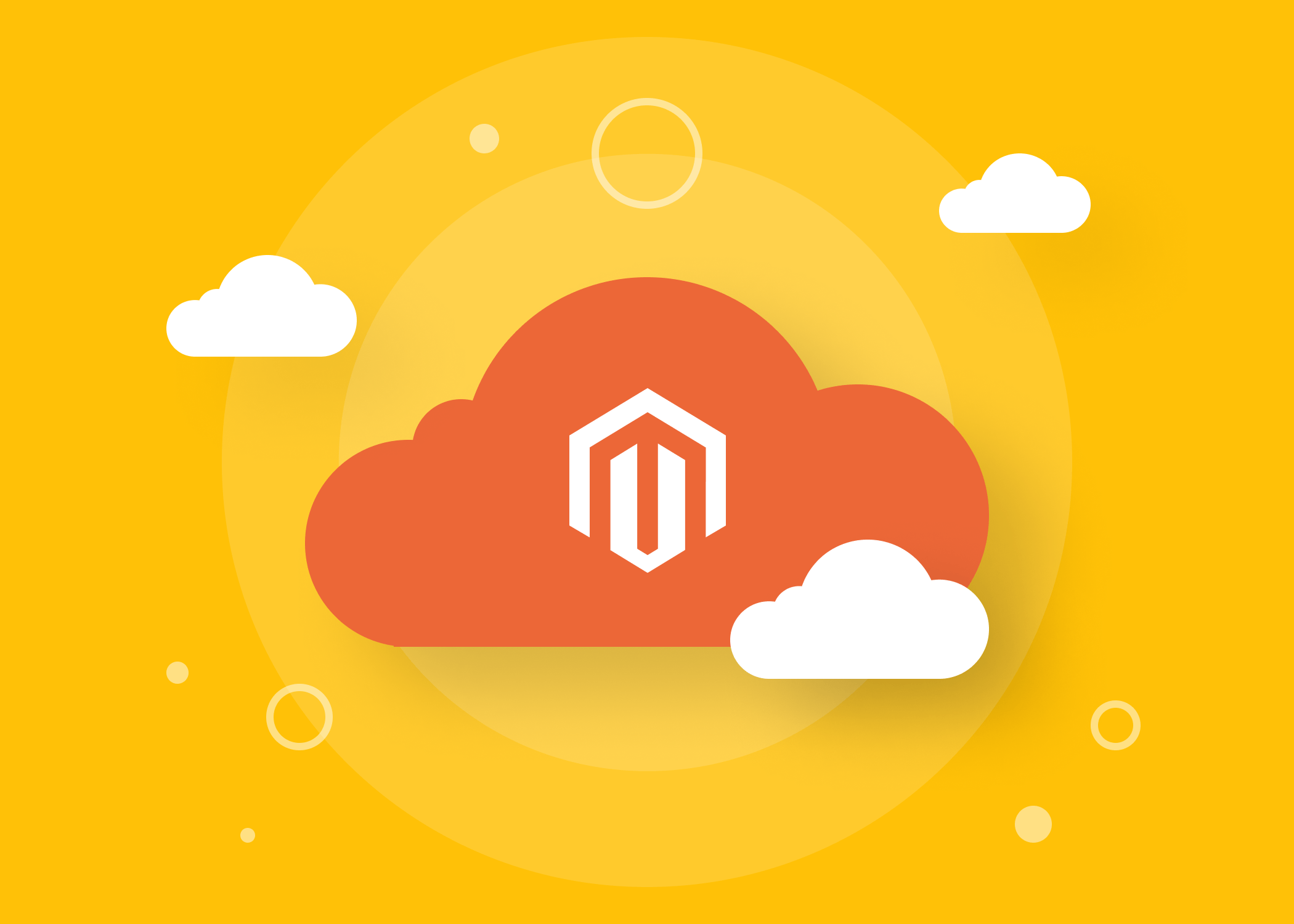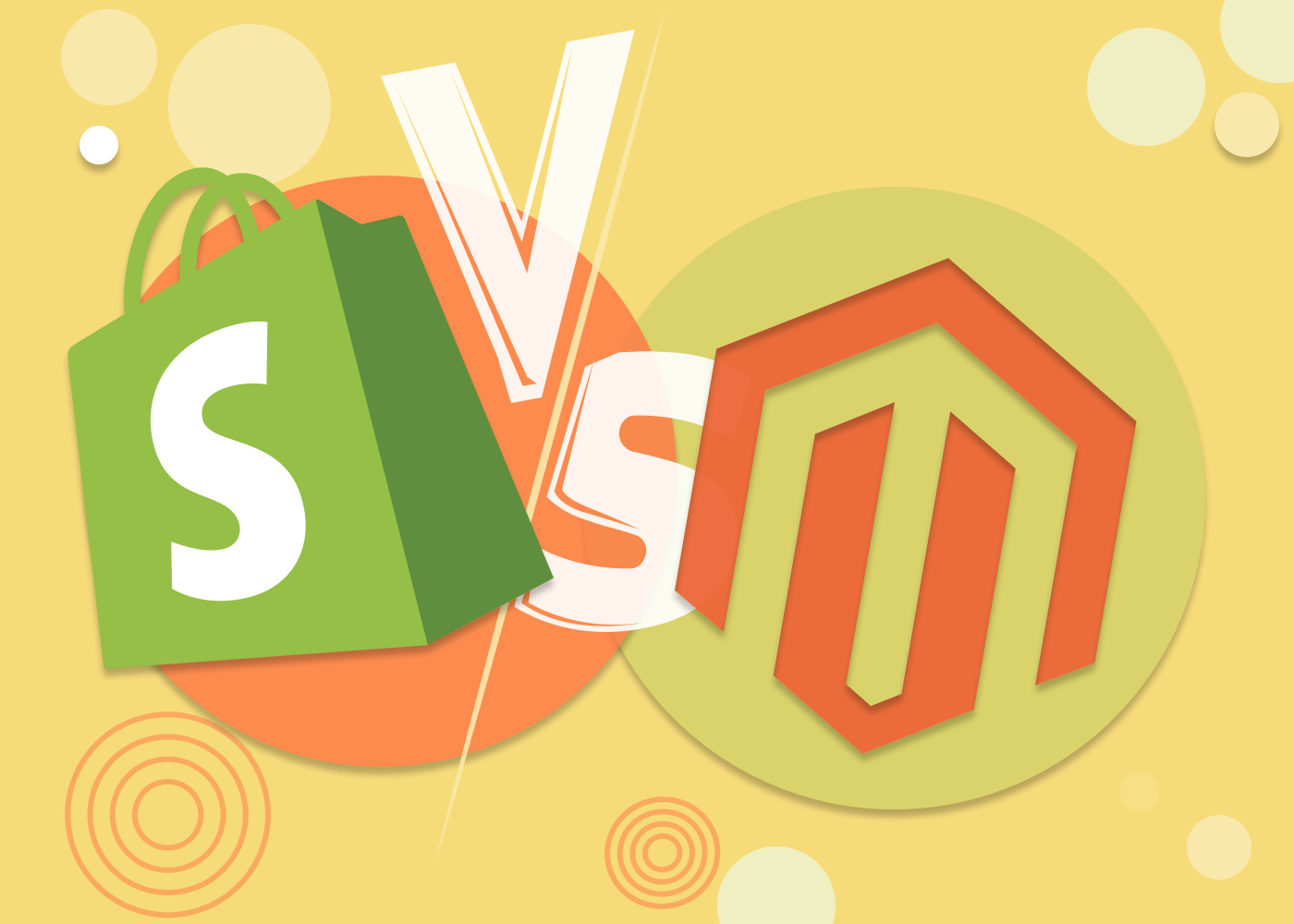Content
Magento Commerce Cloud: A New Level of Excellence

Time to read: 20 minutes
ss.webp)
Technologies used to support worldwide e-commerce are rapidly evolving. These developments have streamlined digital sales and completely rearranged the traditional customer experience that we have come to expect. Choosing the appropriate technology as the foundation for your online presence may be quite complicated because of the extensive variety of e-commerce products.
Our blog often explains emerging or long-established technological advancements to help merchants select technologies for their businesses and equip them for new ventures. In this article, we focus on Magento Commerce Cloud, which is a managed hosting platform for the Magento Commerce system that Adobe offers as a platform as a service (PaaS). We explain the strengths, weaknesses, and pricing of Magento Commerce Cloud. Furthermore, we analyze whether cloud-based software is cost-efficient and whether it’s a proper time to adopt the cloud.
The History of Magento
Magento has been on the market since 2008. During its first few years of existence, the platform won the favor of investors and e-commerce giants, such as eBay.
The Magento Community edition 1.0 (currently Magento Open Source) was first released on March 31, 2008. In light of its consistent success, Magento underwent multiple refinements and improvements. On April 15, 2009, the company launched the Magento Enterprise edition (currently Magento Commerce).
In 2012, the software was downloaded four million times, and as of September 24, 2012, the software served over 150,000 websites.
The year 2015 marked the launch of Magento 2. Along with the growth of Magento, the Magento community expanded. In fact, the community reached 100,000 active members in 2016.
To ensure a resilient and reliable e-commerce infrastructure, the company announced the launch of the Magento Enterprise Cloud edition on April 12, 2016. Within a year, the Magento Enterprise Cloud edition comprised 40% of new Magento bookings.
In 2018, Adobe acquired Magento to develop it further and to transition fully to Magento 2. On June 30, 2020, Adobe ended the support of Magento 1 and encouraged companies to migrate to the latest version for security reasons.
ss.webp)
An Overview of Magento Commerce Cloud
Generally, Magento offers on-premise hosting or cloud services. On-premise hosting refers to software located within the physical space of the data center for developers, businesses, or third parties.
Magento Commerce Cloud, or Adobe Commerce Cloud, as a PaaS-hosted solution, relies on Amazon Web Services, which is one of the leading names in the cloud computing industry. The software provides a complete Magento Development services and deployment system in the cloud, with various resources available on a pay-as-you-go basis. This approach vastly reduces the management and maintenance of IT applications, which is a key reason why more enterprise-level organizations are moving to cloud computing. In fact, this technology generated almost $400 billion in revenue in 2021 and shows no signs of slowing down.
Core features of Magento Commerce Cloud
Before we explain the core functionalities of Magento Commerce Cloud, let’s briefly discuss the current editions of Magento, including Magento Open Source and Magento Commerce.
Magento Open Source is a free, open-source edition aimed predominantly at small- and medium-sized B2C businesses. The platform provides basic e-commerce capabilities, such as checkout, payment, shipping options, site search, catalog management, and WYSIWYG Page Builder, which was a premium feature until the Magento Open Source 2.4.3 version. Despite the edition’s limited functionality, it is a worthwhile initial investment. However, as your business grows and the bar for customer experience rises, you should consider transitioning to the more comprehensive Magento Commerce or Magento Commerce Cloud.
Magento Commerce, a next-level edition, includes all the features of Magento Open Source and more. Thus, Magento Commerce accelerates both B2C and B2B transactions and provides additional functionality, such as content staging and previews, product recommendations, customer segmentation, live search, and customer loyalty tools.
For a more detailed comparison of these two editions, read our article “Magento Commerce vs. Magento Open Source.” In addition, take a look at this article, where our Senior Magento Developer explains the importance of upgrading the minor versions of Magento and outlines three ways to do so in the most cost-efficient manner.
Please note that Magento Commerce Cloud has all the same features as the Magento Commerce edition but contains additional enhancements for cloud infrastructure hosting. We have listed below some of the most significant features that are common to both editions.
Lets talk about itHave a project in mind?
Built-in B2B functionality
To be comprehensive and efficient, B2B strategies should encompass the digital levers that influence customers’ decisions. For example, self-service portals are now used as intelligent pillars in complex B2B transactions. When executed successfully, self-service not only saves time for both the company and the client, but also serves as an efficient tool to analyze the queries posed through self-service. This information can then be used to address potential issues with the customer experience.
In contrast to Magento Open Source, Magento Commerce and Magento Commerce Cloud were specifically designed for B2B buyers. The self-service tools available exclusively within these editions include an account dashboard that allows clients to manage their accounts and perform operations on their own. In addition, customers can use the dashboard to easily access their order history, create new orders, place repeat orders, and download and print invoices.
Business intelligence is another valuable feature that Magento Commerce and Magento Commerce Cloud provide. Generally, B2B websites require a more in-depth and personalized analytic approach because each B2B client must be treated individually. Thus, Magento’s business intelligence feature is exactly what your business needs. Magento helps you seamlessly track your overall business health, monitor all relevant information (from the average order value to retention rates and customer lifetime value by acquisition channel), and consolidate and visualize the information.
ss.webp)
Headless commerce
Headless architecture (core part of the composable commerce concept) is a brand new solution that decouples the front-end layer from the back end, and consequently, it creates diverse user experiences across multiple touchpoints and devices while retaining all data in a single data center. Headless architecture is made possible by an application programming interface (API) endpoint that processes requests between the front-end and back-end layers. The biggest advantage of headless commerce is that it delivers a streamlined omnichannel strategy and provides long-term cost savings because there is no need to build each touchpoint completely from scratch.
To determine whether headless commerce deserves your consideration, review our article “Best Headless E-commerce Platforms.”
Magento is the first headless solution that has been given our top-four rating. Magento version 2.3 supports GraphQL as an API. Therefore, if you still use a previous Magento version, you can go headless by either developing a custom API or upgrading your Magento minor version.
GraphQL is an application-agnostic query language format that delivers the exact amount of data a front-end application needs to ensure the fastest customer experience. Magento Commerce and Magento Commerce Cloud provide more than 500 GraphQL operations, which guarantee future omnichannel flexibility and help developers avoid a technology lock-in and enjoy a wide and flexible choice of tools (e.g., iOS, Angular, React).
Read also our article on composable commerce advantages to discover a full list of business and technical benefits you might get.
Although Magento is the first headless solution that has been given our top-four rating, BigCommerce Headless solutions are also worth considering depending on your business needs and technical specifics. If you want to know which platform is better, you can read our article about Magento vs BigCommerce comparison.
Read also: Composable vs Headless explained: Your mini encyclopedia
Page Builder
Page Builder is another important feature worth mentioning. Its main goal is to simplify the content creation process by dragging and dropping prebuilt controls or content types. This process provides live previews of the content as it will appear on the storefront and form editors for editing and customizing the content. Thus, merchants can seamlessly generate content-reach pages with custom layouts to maximize the benefits from storytelling techniques.
For more information on the features that are common to the Magento Commerce and Magento Commerce Cloud editions, please refer to the official Adobe Commerce feature page. Meanwhile, let’s dive deeper into the distinct features of the cloud infrastructure for Magento Commerce.
What distinguishes Magento Commerce Cloud from on-premise Magento Commerce?
As we have explained, Magento Commerce Cloud is a managed, automated hosting platform for the Adobe Commerce system. So, what distinguishes this solution from the on-premise Magento Commerce?
Magento Commerce Cloud incorporates a pre-provisioned infrastructure that includes PHP, MySQL (MariaDB), Redis, RabbitMQ, and supported search engine technologies. The platform also includes a Git-based workflow with automatic build and deployment tools for rapid and continuous deployment every time you push code changes in the PaaS environment.
In addition, Magento Commerce Cloud offers an advanced level of customization due to its highly customizable environment configuration files and tools.
Furthermore, Magento Commerce Cloud provides performance monitoring tools. New Relic Services collects, views, and analyzes data from your project and uses the results to manage, monitor, and troubleshoot the performance of your system.
ss.webp)
Another valuable characteristic of Magento Commerce Cloud is that the current edition is already PCI-certified as a Level Solution Provider. Becoming PCI-compliant is an extensive process, but merchants acquire this designation by default when they use Magento Commerce Cloud.
What is PCI compliance, and how dangerous is it to be noncompliant? Find the answer to this question in this article: “The PCI DSS and GDPR: How to Make Your Business Compliant”.
Magento Commerce Cloud pricing
Magento Commerce Cloud primarily targets the needs of enterprise-level businesses that have a wide audience and a large volume of transactions. The rationale for Magento Commerce Cloud is to reduce technical overload; thus, reliable infrastructure in the form of a cloud is imperative. Consequently, the cost of Magento Commerce Cloud is at the top of the range when compared to other Magento editions.
The cost for the Magento Commerce Cloud license ranges from $40,000 to $190,000 per year, and the price depends on your store’s annual revenue. For example, if your annual gross revenue is less than $1,000,000, then your license will cost $40,000. If your annual gross revenue is more than $25,000,000, you will pay $190,000 per year.
Let’s estimate the total cost of your e-commerce website, empowered by Magento Commerce Cloud, including the license, development expenses, and payment provider fees.
ss.webp)
Keep in mind that you may incur additional expenses to maintain the excellent performance of your online store. The chart below breaks down the costs for Magento outsourcing support and maintenance services based on a $60 hourly rate for a Magento specialist.
ss.webp)
Pros and cons of Magento Commerce Cloud
Magento creates world-class B2C and B2B experiences with rich, out-of-the-box features. Complement these features with continuous releases and deployment efficiencies of cloud-based services to achieve results that will exceed your expectations. Let’s take a look at the benefits of Magento Commerce Cloud in more detail.
- Improved server uptime. As you may know, the average cost of a minute of IT downtime is $5,600. Using Magento Commerce Cloud helps to avoid this cost because the platform uses a system of interrelated servers that compensate for each other if there is any trouble.
- Faster page speed. High-quality media is an integral part of any respectable brand. At the same time, the better the quality of the image, the slower the loading time. To address this issue once and for all, Adobe introduced innovative image optimization technology that allows you to easily provide authentic content and enhanced page speed.
- Global reach. Leveraging the multi-brand functionality of Magento Commerce Cloud makes conquering the global market a hassle-free process. Your store will have the essential capacity to sell in different markets by using multi-language and multi-currency features as well as localized pricing and tax rates. Moreover, you can manage all content and products from one place.
ss.webp)
Even the most comprehensive technology presents certain drawbacks, and Magento Commerce Cloud is no exception. What are the possible disadvantages of using this solution?
- Technical support limitations. Adobe offers 24/7 customer support for Magento Commerce Cloud. In addition, you will be assigned a personal Magento account manager to address your technical issues. Nevertheless, members of the Magento community have reported an extended wait time in two situations: (1) when their site was under development and (2) when their site was up and running. In these situations, the companies had a low ticket priority, and they were likely to receive a delayed response.
- High cost. The initial development of Magento Commerce Cloud for your business and ongoing support and maintenance require substantial investments. The annual license fee correlates with your store’s annual revenue. The more you earn, the more you pay. However, if you use a professional e-commerce development team, such as Dinarys, to skillfully implement Magento Commerce Cloud for your business, your efforts will pay off in the short and long term.
- Time-consuming development. Generally, Magento Commerce Cloud projects are large-scale, complex, and time-consuming. You should keep this in mind when planning your business strategy.
Why Should You Choose Magento Commerce Cloud?
Business leaders think a lot about creating, delivering, and optimizing their shopping experiences in the best possible way to meet their specific goals and expectations. How can you avoid being confused by the large selection of available tools? As you explore more options, you should have a clear picture of what your business may look like a few years down the road by using one solution or another. Implementing cloud-based CMS, such as Magento Commerce Cloud, should be a priority if you plan to
- Seek collaboration efficiency. You are more likely to achieve this goal with cloud technology because it allows employees within organizations to interact on a much larger scale. This interaction is especially important for international teams to help them effortlessly overcome geographical restrictions and access a multi-region infrastructure from anywhere in the world.
- Innovate in shorter cycles. Time is a valuable asset when it comes to the intense and dynamic business environment. Magento Commerce Cloud enables you to test new ideas and adopt new trends on the go. The platform provides valuable practices and tools to get you up and running and to help you grow at your own pace.
- Serve content on different channels. The capability to deliver comprehensive content is a decisive factor in choosing the right CMS. Magento Commerce Cloud, in conjunction with headless architecture, enables you to reuse content across multiple channels, such as mobile and IoT, while relying on a powerful cloud infrastructure.
Lets talk about itHave a project in mind?
Final Thoughts
Choosing your CMS is just the first step. The perfect solution should address not only your current needs but also potential issues and should allow you to plan your business strategy at least two steps ahead and beyond. Magento Commerce, enhanced by cloud infrastructure, will provide you with an optimal solution and help you develop your business in line with your customer preferences.
Dinarys offers you a sophisticated e-commerce store with game-changing functionalities that contribute to increased profit and broad brand recognition. Drop us a line to discuss your project!
Let professionals meet your challenge
Our certified specialists will find the most optimal solution for your business.




